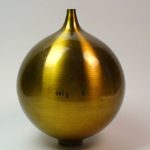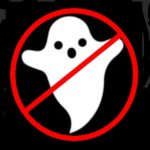Today most people’s experience with a magnetron is as a source of microwaves in residential microwave ovens. The microwave radiation is conveyed to the oven section via a waveguide.

Microwave ovens are also a favorite target of scavengers and experimenters who like to take things apart. The magnetron is one frequently scavenged component. You can find common oven magnetrons on eBay in the range of $15 to $50. Also there you’ll find high-voltage transformers necessary to power the magnetron. These are special-purpose components that typically put out several kilovolts for the magnetron anode and about 5 V for the magnetron filament. Interestingly, these transformers seem to be in the same eBay price range as the magnetrons they power.
It’s possible to find DIY microwave oven plans online. Unfortunately these pages seldom list warnings about the down side of exposure to microwaves and to potentially hazardous oven circuit components. For one thing, the lens of the human eye has no blood circulation and is prone to overheating when exposed to microwave radiation. Such exposure can cause the individual to have cataracts years later. Also, of course, the multi-kilovolt-level voltage required to operate the magnetron must be given respect. And the magnetron circuit contains a beefy power capacitor whose stored energy can be lethal. There is distributed capacitance retaining energy to worry about after the unit has been powered down.

There are other cautions as well. Ceramic insulators associated with the magnetron are dangerous if damaged because they contain beryllium oxide. Inhaled beryllium oxide dust, a carcinogen, can cause an incurable lung disease known as berylliosis. Magnetron filaments contain radioactive thorium mixed with tungsten. Do not remove the filament and leave it unattended.
The cavity magnetron generates microwave radiation by propelling a stream of electrons past an array of cavities consisting of drilled holes in the copper body. These charge carriers cause microwaves to oscillate within the body, then proceed to a waveguide where, without loss, they are conveyed to the oven enclosure. The cavity’s physical dimensions determine the frequency of the microwave output. The magnetron, unlike similar vacuum tube cathode and anode devices, cannot amplify the signal. It is only an oscillator.
The magnetron is connected to the output of a high-voltage dc power supply. A heated cathode emits electrons, which, as in a glass-enclosed vacuum tube, flow toward the anode, which is the entire copper magnetron body. In early models, an external dc-powered electromagnet generated a static magnetic field perpendicular to the flow of electrons. Modern magnetrons use permanent magnets, among the items frequently scavenged from discarded units. Either way, the magnetic flux and electron flow are perpendicular to one another.

Influenced by the magnetic field, the electron flow experiences a force perpendicular to its curved path between electrodes. The curvature can be modified by varying either the magnetic field or the electrical potential between cathode and anode. In the presence of a strong magnetic field, there is no flow of electrons. At intermediate magnetic intensity, the electrons are able to strike the anode.
At this critical magnetic level, the magnetron generates RF energy. That is because a portion of the electrons, failing to reach the anode, assumes a circular path just short of the anode. These electrons radiate RF. The frequency depends upon the physical size of the assembly, so early researchers were easily able to build microwave generators. Only magnetrons, in contrast to conventional vacuum tubes, were able to put out high power in the microwave portion of the RF spectrum. This arrangement, however, had limited applications at first due to its instability and low power output.

These limitations were overcome by the introduction of the negative-resistance or split-anode magnetron. This model consisted of a two-part anode. Space between the two half cylinders insulated them electrically so that separate biases could be applied to each. The two half cylinders could be charged to the same voltage, in which case the magnetron operated like earlier models. Applying slightly different voltages to the two anodes caused the electrons to be attracted to and flow to the more positively charged plate. An external oscillator was connected to the two plates. When a strong magnetic field was applied, the electrons followed a looping rather than circular path toward the anodes and the overall output power was greater than in the single-anode magnetron. A disadvantage, however, was that a portion of the electrons returned to the cathode, which then overheated and released still more electrons initiating an avalanche condition.
The resonant cavity magnetron, also known as an electron-resonant magnetron, provides a high-power, high-frequency output, and there is not the overheating problem as in the split-anode model. The oscillation is created by the shape of the anode.
The resonant cavity magnetron consists of a single, solid block drilled through the geometric axis. The entire metal block is the anode. Typically, there are nine (preferably an odd number) smaller drilled holes spaced evenly around the central hole and each connected to it by means of a narrow slot. In the central hole are leads running to the heater and cathode, which is coated with an oxide. Through one of the small holes is the output coupling loop, which allows RF energy to be extracted and fed to a waveguide.
The assembly is analogous to an LC oscillator. The capacitors consist of the parallel sides of the connecting slots and the inductors are the round holes. The output frequency is dependent upon the dimensions of these elements.
Large amounts of RF energy are generated within the resonating cavities. Because the cavities are open at one end, they become synched and function as a single oscillator. Upon powering up, oscillation requires slightly varying times, so phase is not preserved. Moreover, from pulse to pulse frequency may drift a slight amount. But this is not a problem for continuous-wave radar and, of course, not for microwave ovens.
In modern cavity magnetrons, the heated cathode sits at the center of the large central hole, from which air is evacuated. A permanent magnet creates a magnetic field that is perpendicular to the electrical field and to the flow of electrons.
Electrons, moving from cathode to anode, are compelled by the magnetic field to conform to a circular path, which, combined with the straight path toward the anode, is actually a spiral due to the Lorentz force, the force exerted on a charged particle moving through an electric and magnetic field. As the electrons cross the slots associated with the individual resonant cavities, a high-frequency radio field forms in each cavity, a portion of which is extracted by the antenna and fed to the waveguide, then to the load, either the cooking enclosure or a radar assembly. The frequency of the emitted microwaves is determined by the size of the resonant cavities in conjunction with the size of the slots.
The modern magnetron is reasonably efficient. Approximately 65% of the electrical energy from the power supply becomes microwave radiation. The balance of the power is dissipated in the form of heat. Active cooling is essential. It is provided by the fan you hear when the microwave oven is running. More powerful magnetrons, as used in some radar applications, are water cooled.
S-band magnetrons regularly output up to 2.5 MW-peak of microwave energy and supply over 3.75 kW continuously. These powerful magnetrons are reliable and efficient compared to other microwave generators, but they do not provide precise control over phase and frequency.
However, the days of scavenging microwave oven magnetrons may be coming to an end. The advent of high-power transistors able to handle microwave frequencies could make them obsolete. Solid-state power amplification has an initial higher cost, which indicates that it may prevail sooner in large commercial as opposed to residential settings.






Myself and colleagues suggest ancient magnetrons exist.
If you google Osirion diagram top view you would be amazed how closely it resembles and shares qualities with planar magnetrons.
If true… We could reexamine many structures such as stonehenge.